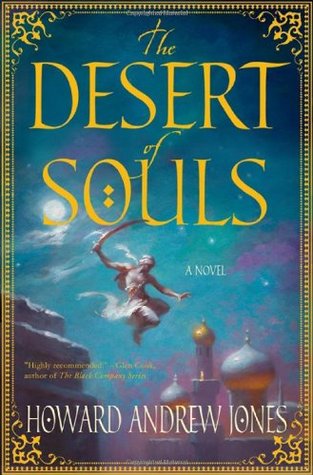The Old World is a world that is intended to evoke an atmosphere of mystery and wonder, but at the same time be relatively easily accessible with no need for long exposition. A good way to do this is by using familiar things that the audience recognizes as a shortcut around unelegant infodumps. Possibly the best example of this method is Star Wars, especially the first movie. Everything you need to know you learn in the first two or three minutes with just a few words from C-3PO. The Rebels are running away in a cool looking ship with very big engines, the Empire pursues them with a ship that is just totally fucking humongous! Then the door explodes and through it comes a hord of guys in skeleton armor shoting everyone. And then this guy in black armor, a black cloak, and a black skull mask follows behind them. And he is accompanied by officers wearing Nazi uniforms. Barely any words have been said yet but you already know everything you need to know about this conflict.
I am using a similar approach to presenting the wildlife in the Old World. It’s different from the animals found in Europe and Northern America, but mostly these are animals that are very similar to what we are already familiar with on Earth. For that reason I am drawing heavily on prehistoric animals like dinosaurs and early mammals. They are very much like normal animals, but they also don’t look like anything we’re used to, which matches my overall approach to the worldbuilding for the Old World. Distinctively different, but not too alien.
In addition to being a convenient shortcut to create a plausible and easy to grasp ecology, basing these creatures on real animals also helps with establishing a clear difference between natural beasts and supernatual monsters. An important element of making things both fascinating and unsettling is a good amount of uncertainty what you’re actually dealing with. In settings in which the natural world is mostly identical to life on Earth, it is very easy for the audience to tell the difference between what is normal and what is alien. When you populate a world primarily with fictional creatures, this becomes a lot more difficult. Is something supposed to be threatening or not? The audience has to understand that to get into the thoughts of the characters who are dealing with it. By keeping the natural beasts of the Old World to animals that did exist or could very well have existed on Earth in the past, I am hoping to make this distinction more clear and easy to grasp.
There are no stats for any roleplaying game attached to them at this point, but to help getting an impression about their strength, each is given a threat class ranging from 0 to 6.
Arag

The arag is a predator about the size of a large dog. Their appearance is somewhat similar to reptiles and weasels and they are covered in sleek gray and brown fur. They have a very wide range and are found in almost all parts of the mainland, but are rare on smaller islands far away from the coast. Arags usually stay away from settled areas, but have little fear of single travelers in the wilderness and will sometimes even attack small groups. (Class 2)
Draga
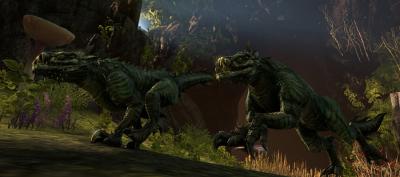
A draga is a big reptile about the size of a lion but of a more slender build. It’s tough hide is a deep emerald green but tends to be more brown in regions where forests are less dense and there is less vegetation and shadows. Arags are usually solitary but sometimes hunt in groups of three or four, which are able to kill almost anything they come across. (Class 4)
Droha

The droha is a big reptile found in all the tropical and temperate forests of the Old World, except on smaller islands. It’s about the size of a camel and has been domesticated in many areas as the main beast of burden. Drohas often live in herds of one to three dozen individuals. (Class 2)
Garai
 The garai is one of the largest predators found in the Old World. It’s a huge lizard bigger than the largest crocodiles and found throughout most of the southern regions. They are not terribly fast and rarely chase their prey far, but are surprisingly adept at hiding in the underbrush despite their enormous size. (Class 4) Continue reading “Old World Animals”
The garai is one of the largest predators found in the Old World. It’s a huge lizard bigger than the largest crocodiles and found throughout most of the southern regions. They are not terribly fast and rarely chase their prey far, but are surprisingly adept at hiding in the underbrush despite their enormous size. (Class 4) Continue reading “Old World Animals”

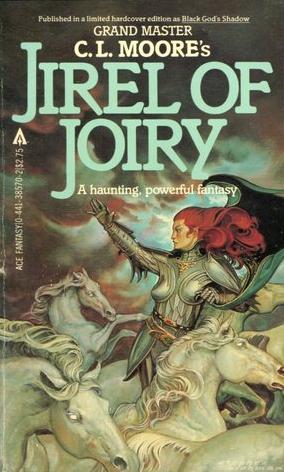 The stories themselves are a mixed bag. I quite like the first story Black God’s Kiss and the last story Hellsgarde, but was hugely disappointed by the other three. One thing that Moore does get very right is the creation of atmosphere and the imagining of strange and alien sights and landscapes. This is stuff that stands up pretty well when compared to the imagery evoked by Clark Ashton Smith, who was certainly a master at this. But this is not much consolation considering that the plots all completely suck.
The stories themselves are a mixed bag. I quite like the first story Black God’s Kiss and the last story Hellsgarde, but was hugely disappointed by the other three. One thing that Moore does get very right is the creation of atmosphere and the imagining of strange and alien sights and landscapes. This is stuff that stands up pretty well when compared to the imagery evoked by Clark Ashton Smith, who was certainly a master at this. But this is not much consolation considering that the plots all completely suck.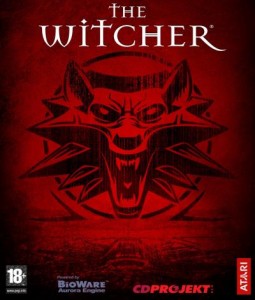 I was very much intrigued by The Witcher the very first time I heard about it, back around 2005 or so. “Dark Fantasy” had not really been a huge thing back then and the concept sounded like a fresh new approach to the genre that to me was mostly defined by The Lord of the Rings and Dungeons & Dragons. The game was released in 2007 and I played it the first time not very long after that. However, I never actually finished it. And greatly enjoying the books now and wanting to play the second game again, it seemed the appropriate thing to give this game another go.
I was very much intrigued by The Witcher the very first time I heard about it, back around 2005 or so. “Dark Fantasy” had not really been a huge thing back then and the concept sounded like a fresh new approach to the genre that to me was mostly defined by The Lord of the Rings and Dungeons & Dragons. The game was released in 2007 and I played it the first time not very long after that. However, I never actually finished it. And greatly enjoying the books now and wanting to play the second game again, it seemed the appropriate thing to give this game another go.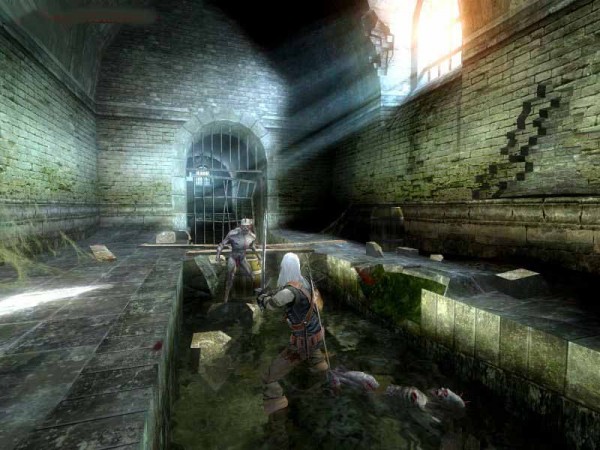 Gameplay
Gameplay